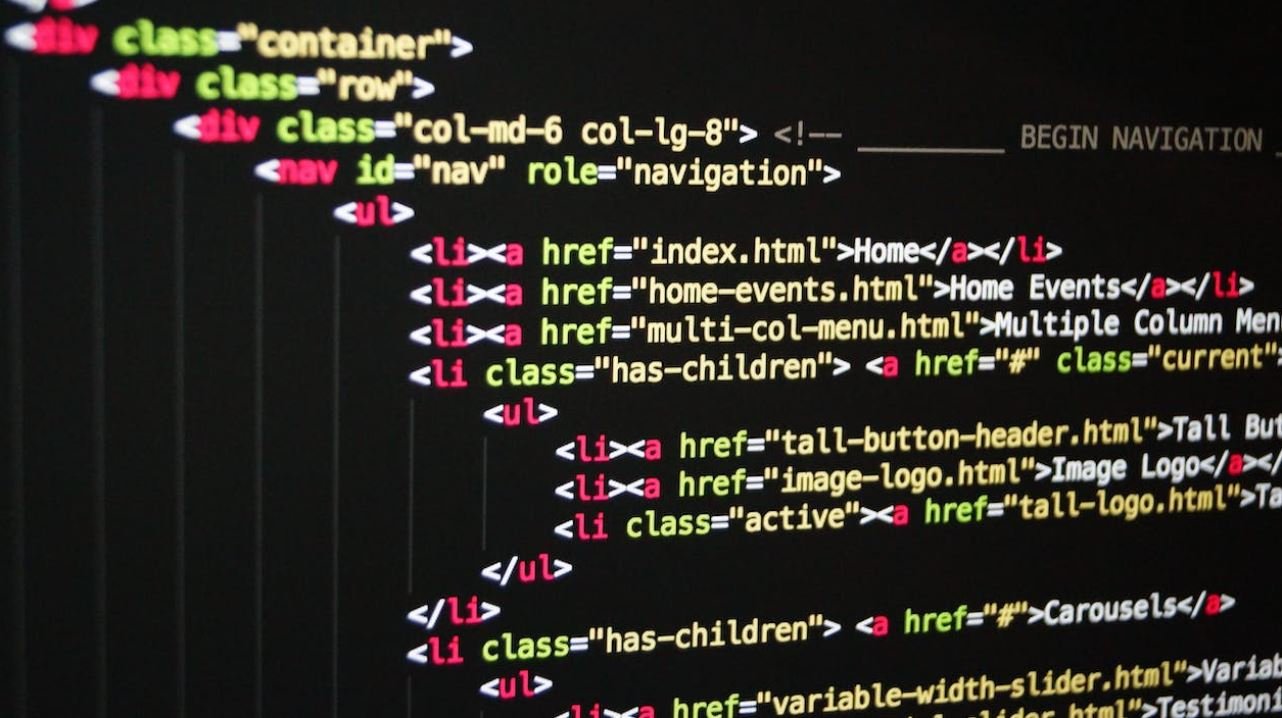Language Process of Change
Languages are not static; they constantly evolve and change over time. This process of change can be fascinating to observe and understand.
Key Takeaways:
- Languages naturally evolve and undergo changes over time.
- Various factors influence language change, including cultural shifts and contact with other languages.
- Language change occurs at different levels, such as phonological, lexical, and grammatical.
The Nature of Language Change
**Language change** is inherent to the dynamic nature of human communication. It is a gradual process that occurs over generations as language speakers adapt and modify their linguistic systems. *Language change can be seen as a reflection of societal and cultural changes.*
At the individual level, **language variation** is also observed. Every person has their unique way of using language, influenced by their background, education, and social environment. These variations can contribute to the overall evolution of a language.
Types of Language Change
Language change can be classified into several types, each impacting different aspects of a language’s structure:
- **Phonological change**: This type of change involves shifts in pronunciation patterns and sound systems. *Phonological changes can result in the emergence of new accents or dialects.*
- **Lexical change**: Language constantly absorbs new words or discards old ones. *Neologisms, or newly coined words, reflect societal, technological, or cultural developments.*
- **Semantic change**: Over time, word meanings can shift or expand, leading to changes in the semantic structure of a language. *For example, the word “gay” has evolved from meaning “happy” to also refer to sexual orientation.*
- **Grammatical change**: The rules and structures of a language can undergo modifications. *For instance, the loss of verb conjugations in English compared to Old English.*
Factors Influencing Language Change
Language change is influenced by various factors:
- **Cultural shifts**: Changes in societal values, beliefs, and practices can impact language usage and shape linguistic evolution.
- **Language contact**: When languages come into contact, through conquest, trade, or migration, they can influence one another and result in changes in both languages.
- **Technology**: Technological advancements have led to the creation of new terminologies and vocabulary, driving lexicon expansion and language change.
- **Youth language**: Younger speakers often introduce new phrases, slang, and linguistic innovations, contributing to the continuous evolution of language.
Tables
| Rank | Language | Approximate Number of Native Speakers |
|---|---|---|
| 1 | Mandarin Chinese | 1.3 billion |
| 2 | Spanish | 460 million |
| 3 | English | 379 million |
| Stage | Time Period | Key Features |
|---|---|---|
| Old English | 450-1100 AD | Synthetic grammar, heavily influenced by Germanic languages |
| Middle English | 1100-1500 AD | Influence of French vocabulary, rise of standardization |
| Modern English | 1500-present | Simplification of grammar, extensive borrowing from other languages |
| Language A | Language B | Borrowed Words |
|---|---|---|
| English | French | Restaurant, ballet, souvenir |
| Arabic | English | Coffee, algebra, algorithm |
| Japanese | English | Game, computer, TV |
Conclusion
The language process of change is an ongoing phenomenon that reflects the dynamic nature of human communication and societal shifts. *Understanding and embracing language change allows us to appreciate the richness and diversity of languages across the world.*

Common Misconceptions
Misconception 1: Language change is incorrect or a sign of laziness.
One common misconception about language change is that it is incorrect or reflects laziness. Many people mistakenly believe that language should remain unchanged and that any modern alterations to grammar or vocabulary are indicative of a decline in language proficiency. However, language change is a natural and necessary process that allows languages to adapt to the evolving needs and cultural shifts of its speakers.
- Language change occurs naturally over time
- Evolution of language is driven by societal and cultural changes
- New words and expressions can enrich language
Misconception 2: Language change only happens in informal or non-standard speech.
Another misconception is that language change is limited to informal or non-standard speech. Some people believe that only colloquial language undergoes any substantial transformation while formal and standardized language remains constant. This is not the case. All forms of language, including formal and standardized varieties, experience change over time.
- Language change affects all linguistic registers
- Formal language also adapts to societal shifts
- Even standardized language evolves through time and usage
Misconception 3: Language change is solely driven by young generations.
There is a common misconception that language change is solely driven by the younger generations, with older generations resisting any modifications. While it is true that younger people often adopt and create new linguistic trends, language change is a gradual and collective process that involves speakers of all ages. People of all generations contribute to language change and may adopt new expressions or modify language in their speech patterns.
- Language change involves speakers of all ages
- Older generations also contribute to linguistic shifts
- Younger generations may adopt older expressions or forms
Misconception 4: Language change only happens within one language.
Some people mistakenly believe that language change only occurs within a single language and that languages remain isolated from each other. However, language change is not confined to one language but can be observed across languages and language families. Language contact and influences from other languages can lead to changes in vocabulary, grammar, and pronunciation.
- Language change can happen across languages
- Languages can borrow and adapt words from other languages
- Different languages can share similar language changes
Misconception 5: Language change leads to the erosion of the language.
Another misconception is that language change leads to the erosion or deterioration of the language. This belief suggests that language change weakens the language’s structure, grammar, and overall clarity. However, language change is a natural and dynamic process that allows language to evolve and adapt to the needs of its speakers.
- Language change allows for linguistic innovation
- Language change can increase linguistic expressivity
- Language change preserves language relevance in different contexts

The Impact of Language Change on Global Communication
In today’s interconnected world, language plays a crucial role in facilitating communication among diverse cultures and societies. As languages evolve over time, it is interesting to examine various aspects of language change and its implications. The following tables provide a glimpse into the fascinating process of linguistic transformations, highlighting both historical and contemporary developments.
Language Families Across the Globe
Table showing the distribution of major language families across different regions of the world:
| Language Family | Regions |
|---|---|
| Indo-European | Europe, parts of Asia and Oceania, Americas |
| Sino-Tibetan | China, Southeast Asia |
| Afro-Asiatic | Middle East, North Africa |
| Niger-Congo | Sub-Saharan Africa |
English Vocabulary Growth Over Time
An intriguing look at the expansion of the English language through the years, measured by the number of words in the Oxford English Dictionary (OED) at different periods:
| Year | Number of Words |
|---|---|
| 1755 | 43,000 |
| 1857 | 73,000 |
| 1950 | 250,000 |
| 2021 | 600,000 |
Phonological Shifts: English Great Vowel Shift
Understanding the ongoing evolution of English pronunciation requires focusing on significant phonological changes, such as the Great Vowel Shift:
| Vowel | Sound (Middle English) | Sound (Modern English) |
|---|---|---|
| “a” | /aː/ | /eɪ/ |
| “e” | /ɛː/ | /iː/ |
| “o” | /oː/ | /uː/ |
Gender-Neutral Pronouns Usage
A look at the increasing adoption of gender-neutral pronouns in English-speaking societies:
| Pronoun | Usage Increase (%) |
|---|---|
| They/them | 103% |
| Ze/hir | 59% |
| Xe/xem | 28% |
Loanwords in the English Language
An exploration of loanwords from different languages that have become integral parts of the English lexicon:
| Language of Origin | Examples |
|---|---|
| French | Champagne, déjà vu, cuisine |
| Latin | Ad hoc, bona fide, et cetera |
| Japanese | Karaoke, sushi, tsunami |
Language Endangerment
The alarming rate at which languages are no longer being spoken and are facing potential extinction:
| Language | Estimated Speakers |
|---|---|
| Wukchumni (Native American) | Less than 10 |
| Koro (Tibeto-Burman) | Approx. 300 |
| Manx (Celtic) | Revitalized with around 1,800 speakers |
The Spread of English as a Global Lingua Franca
Examining the prevalence of English as an international language for communication among non-native speakers:
| Country | English Proficiency Level (Based on CEFR) |
|---|---|
| Netherlands | C1 (Advanced) |
| India | B2 (Upper-Intermediate) |
| Brazil | B1 (Intermediate) |
Sign Language Varieties
Highlighting the diversity of sign languages used around the world:
| Sign Language | Country/Region |
|---|---|
| American Sign Language (ASL) | United States, Canada |
| British Sign Language (BSL) | United Kingdom |
| Auslan | Australia |
Language Preservation Efforts
An overview of initiatives aimed at preserving endangered languages and cultural heritage:
| Project | Language Focus | Location |
|---|---|---|
| Living Tongues Institute | Various endangered languages | International |
| Māori Language Commission | Māori | New Zealand |
| Endangered Language Alliance | Multilingual focus | New York City, USA |
In conclusion, language is not a static entity, but a dynamic force that undergoes continuous transformation. The tables presented above offer insights into the diverse facets of language change, including its distribution, vocabulary growth, phonological shifts, sociocultural implications, and preservation efforts. As we navigate the ever-evolving linguistic landscape, understanding these changes enables us to appreciate the richness and adaptability of human communication.
Frequently Asked Questions
How does language change over time?
Language changes over time due to various factors. These may include social, political, and technological influences, as well as the natural evolution of speech patterns and communication. Over the years, new words are coined, grammar rules may be altered, and pronunciation can shift, leading to changes in the language’s overall structure and vocabulary.
What are some common causes of language change?
Language change can be driven by a multitude of factors. Some common causes include cultural shifts, contact between different languages and dialects, technological advancements, migration and mixing of populations, and new inventions or concepts requiring linguistic expression. Additionally, societal changes, such as changes in gender roles or political ideologies, can also influence language patterns.
What are the different types of language change?
Language change can occur in various ways. Some types of language change include lexical change (addition, deletion, or alteration of words), phonetic change (alterations in pronunciation), grammatical change (evolution of grammar rules or patterns), and semantic change (changes in word meaning). These different types of change often interact with each other, shaping the overall evolution of a language.
How long does it take for language to change significantly?
The rate at which language changes can vary depending on several factors. Generally, significant changes may take many generations to become noticeable, while smaller shifts can happen more rapidly. However, rapid language change can occur during periods of intense cultural contact or technological advancements, leading to accelerated shifts in linguistic patterns.
Can language change be controlled or regulated?
While some language change can be influenced by regulatory bodies, such as language academies or educational institutions, the overall process of language change is largely spontaneous and driven by natural linguistic developments. Language regulation can help standardize certain aspects of a language, but it cannot fully prevent or control the organic evolution and variation of language over time.
What are the consequences of language change?
Language change can have both positive and negative consequences. On one hand, it allows languages to adapt to new cultural and social contexts, facilitating effective communication. It also reflects the dynamism and vitality of a society. On the other hand, language change can lead to misunderstandings between different generations or groups, and sometimes certain dialects or language variants can become endangered or extinct.
What role do technology and media play in language change?
Technology and media play a significant role in shaping language change. The advent of new communication technologies, such as the internet and social media, has given rise to new forms of language, such as emojis or internet slang. Additionally, media, including movies, television, and music, can influence language patterns by introducing new words, expressions, or accents to a wider audience.
How does language change affect language diversity?
Language change can impact language diversity in several ways. As societies become more interconnected, there is a tendency for languages to borrow words or grammatical structures from each other, resulting in shared features and reduced linguistic diversity. However, language change can also contribute to the development of new languages or dialects, branching out from existing ones, thereby enhancing language diversity.
Can language change be reversed?
Language change, once it has occurred, cannot be fully reversed. However, certain aspects of language change can be preserved or revived through language revitalization efforts. These efforts involve maintaining or reintroducing older forms of a language, often done through language documentation, education, and policy initiatives. However, despite such efforts, complete reversal of language change is not possible.
What are some examples of notable language changes in history?
Throughout history, there have been numerous examples of language changes. Some notable examples include the development of Old English into Middle English and eventually Modern English, the significant changes in pronunciation during the Great Vowel Shift, and the formation of hybrid languages such as Creoles through the mixing of different linguistic elements. These changes highlight the dynamic nature of language and its continuous evolution.




